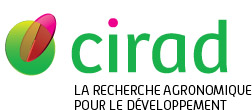Audouin Elise, Odru Mariana, Masse Dominique, Dorego Gualbert Séraphine, Delaunay Valérie, Lecomte Philippe, Vayssières Jonathan. 2024. A methodology based on territorial metabolism analysis to assess the multi-criteria sustainability of African village terroirs with contrasted crop-livestock systems. Agricultural Systems, 213:103781, 20 p.
|
Version publiée
- Anglais
Accès réservé aux personnels Cirad Utilisation soumise à autorisation de l'auteur ou du Cirad. 612992.pdf Télécharger (3MB) | Demander une copie |
Résumé : CONTEXT: Agricultural intensification to ensure food security and limit rural exodus is a major issue in sub-Saharan Africa. The potential of livestock farming to improve the sustainability of farming systems has been studied but rarely at the landscape level. However, because the herds move about in the landscape, thereby creating horizontal biomass and nutrient flows between plots and households, the landscape is the only level where all the interactions between the different components of the agro-ecosystem (animals, crops and trees) can be considered. OBJECTIVE: Our objective was to develop a methodology that uses territorial metabolism for multicriteria assessment of sustainability to compare contrasted livestock systems. METHODS: We compare two neighboring village terroirs in the former groundnut basin of Senegal. One village (Diohine), has kept a “traditional extensive system” based on fallow, free grazing and night corralling, while the other (Barry) uses a “modern semi-intensive system” based on livestock fattening in which the livestock is stall-fed with feed concentrate and crop residues. During the survey, village households were asked to describe their practices and to quantify biomass and nitrogen (N) flows to enable us to calculate sustainability indicators (productivity, balance, efficiency, dependency, profitability) at plot, household and village terroir levels. RESULTS AND CONCLUSIONS: At village terroir level, introducing livestock fattening increased the livestock stocking rate (0.96 TLU ha-1 in Diohine and 2.31 TLU ha-1 in Barry) and spreading of solid manure on crop fields (respectively 337 and 482 kgDM ha-1). Fattening livestock requires large imports of feed concentrate, 23.67 kgN ha-1 in Barry versus 3.39 kgN ha-1 in Diohine. The improved livestock productivity of fattening (+217 kgLW ha-1) produces higher financial returns (+432€ household-1 year-1) that enable the use of more mineral fertilizers (6.28 kgN ha-1 in Barry versus 1.09 kgN ha-1 in Diohine). The additional N inputs in Barry enable increased yields of the main staple crop (millet) (+101 kgDM ha-1). The population density of Barry village is +78% higher (320 capita km-2 in Barry versus 180 capita km-2 in Diohine). The village nitrogen balance (24.88 kgN ha-1 in Barry versus 8.51 kgN ha-1 in Diohine) and N use efficiencies (respectively 0.64 and 0.15) demonstrate that nutrient cycling and soil fertility management are more sustainable in Barry.
Mots-clés Agrovoc : agriculture durable, bilan azoté, intensification, développement durable, Arachis hypogaea
Mots-clés géographiques Agrovoc : Sénégal, Afrique au sud du Sahara
Mots-clés libres : Territorial metabolism, Nutrient cycling, Village terroir, Agro-sylvo-pastoral systems, Livestock fattening, Senegal
Agences de financement européennes : European Commission
Agences de financement hors UE : Agence Nationale de la Recherche
Programme de financement européen : FP7
Projets sur financement : (EU) AN Integration of Mitigation and Adaptation options for sustainable Livestock production under climate CHANGE, (FRA) Auto-adaptation des agro-socio-écosystèmes tropicaux face aux changements globaux ? Etude à long terme en vue d'une intensification écologique de la production de céréales dans les zones de savanes en Afrique de l'Ouest
Auteurs et affiliations
- Audouin Elise, INRAE (FRA) - auteur correspondant
- Odru Mariana, INRAE (FRA)
- Masse Dominique, IRD (FRA)
- Dorego Gualbert Séraphine, ISRA (SEN)
- Delaunay Valérie, IRD (FRA)
-
Lecomte Philippe, Université de Montpellier (FRA)
 ORCID: 0000-0003-1040-7886
ORCID: 0000-0003-1040-7886
-
Vayssières Jonathan, CIRAD-ES-UMR SELMET (REU)
 ORCID: 0000-0003-3127-7208 - auteur correspondant
ORCID: 0000-0003-3127-7208 - auteur correspondant
Source : Cirad-Agritrop (https://agritrop.cirad.fr/612992/)
[ Page générée et mise en cache le 2025-04-23 ]




